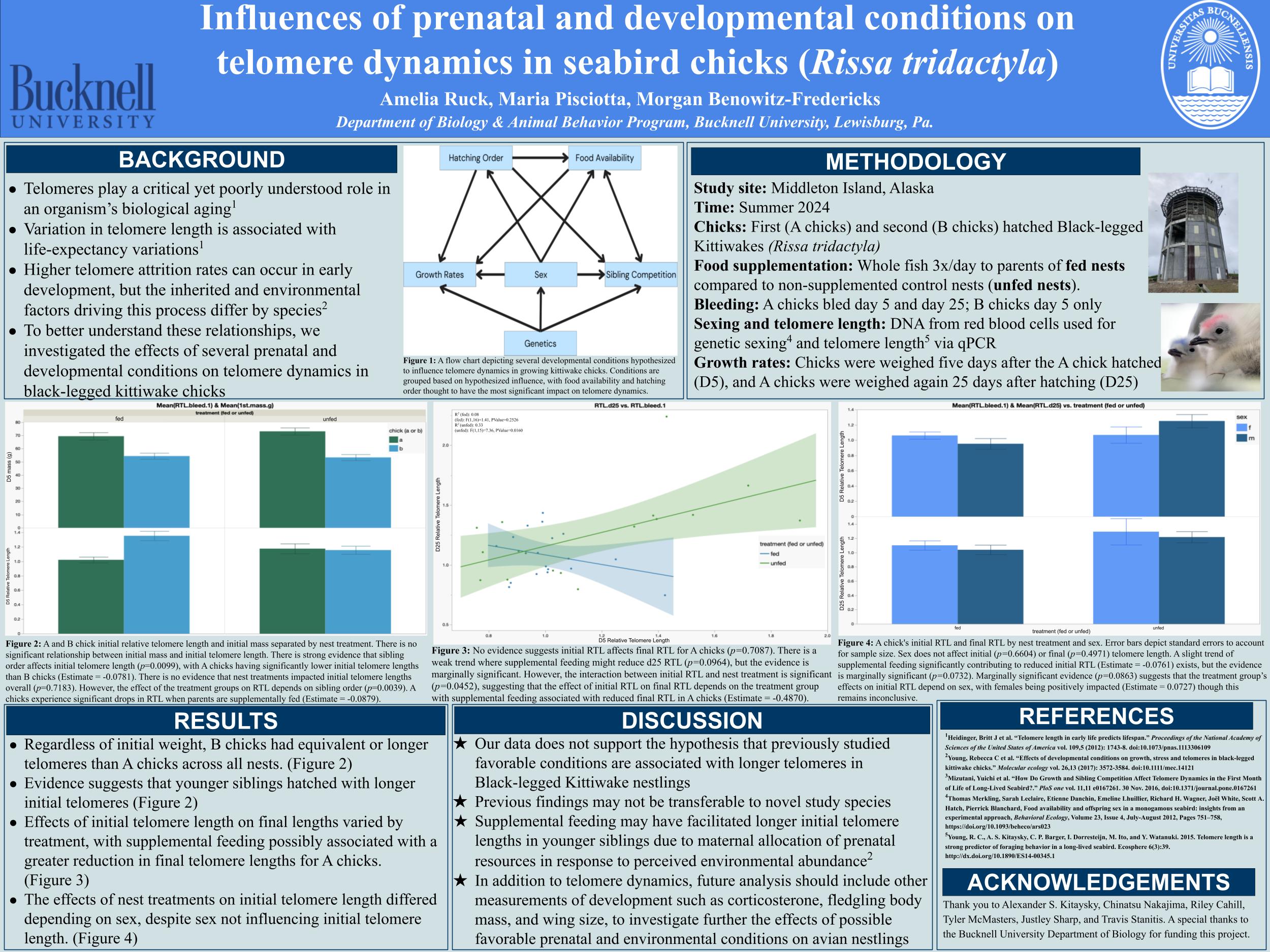
Influences of prenatal and developmental conditions on telomere dynamics in seabird chicks (Rissa tridactyla)
Author:
Amelia Ruck ’25Co-Authors:
Maria Pisciotta, Morgan Benowitz-FredericksFaculty Mentor(s):
Morgan Benowitz-Fredericks, Animal BehaviorFunding Source:
Bucknell University Department of BiologyAbstract
This study investigates the effects of prenatal and postnatal environmental conditions on telomere dynamics in Black-legged Kittiwake chicks (Rissa tridactyla). Telomeres are considered molecular markers for biological aging. They are highly conserved, noncoding, repetitive DNA sequences that form the “caps” at the end of chromosomes, protecting the coding sequences. In some species, variation in telomere length among same-age individuals is associated with individual “quality” and variations in life expectancy. Although higher telomere attrition rates can occur in early development, the inherited and environmental factors driving this physiological process vary by species. In kittiwakes, chicks develop in the nest for over forty days. During this time, chicks are subjected to environmental conditions that affect their growth and longevity. The ensuing study will test the hypothesis that favorable conditions are associated with longer telomeres. We will use blood samples from known-age kittiwake chicks to assess the potential impacts of food availability, sex, hatching order, and sibling competition on chick telomere dynamics. From our hypothesis, we predict that high food availability, status as a first-hatched chick (A chick), and lower sibling competition contribute to maintaining inherited telomere length. Additionally, we will test the hypothesis that rapid growth is associated with longer telomeres at hatching but more rapid telomere loss during development. If this is true, male chicks who grow faster and may have higher metabolic rates will hatch with longer telomeres but show more telomere loss than female chicks.